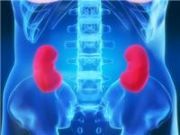Article
Renal Denervation ‘Not Dead Yet'
Author(s):
The quest for a non-pharmaceutical therapy for hypertension suffered a setback recently with the publication of two studies on renal denervation (RDN). Both articles appeared in the Journal of the American College of Cardiology, and both reported on trials that showed the procedure did not lower blood pressure. But in an accompanying editorial, Vivek Reddy, MD, and Jeffrey Olin, DO, said they have critical questions about those studies that need to be answered before RDN therapy is written off.

The quest for a non-pharmaceutical therapy for hypertension suffered a setback recently with the publication of two studies on renal denervation (RDN).
Both articles appeared in the Journal of the American College of Cardiology, and both reported on trials that showed the procedure did not lower blood pressure.
But in an accompanying editorial, Vivek Reddy, MD, and Jeffrey Olin, DO, said they have critical questions about those studies that need to be answered before RDN therapy is written off.
The editorial made four points.
- · Researchers need to see whether there are factors that could make some patients better candidates for RDN, such as people with high sympathetic nervous system activity.
- · More attention has to be paid to proficiency in the RDN technique, with outcomes data at various centers made public.
- · Ultrasound or direct injection of drugs might be a better way to destroy the targeted nerve endings.
- · Future clinical trials need to be better designed.
RDN is meant to work to address resistant hypertension by interfering with the sympathetic nervous system.
Hypertension is known to be associated with increased sympathetic tone.
The RDN procedure involves using radio waves to strip nerve endings from the vascular wall of the renal arteries and lower that tone. The device to do that is a catheter system known as the Medtronic Symplicity Renal Denervation System.
Early clinical trials showed the approach seemed to work to reduce blood pressure (BP).
“The magnitude of the effect on BP in these patients was dramatic,” Reddy and Olin wrote. RDN reduced BP by 32/12 mm Hg in the subjects while the control group’s hypertension showed no change.
So what went wrong after that?
According to Reddy there are a number of theories.
Study subjects’ blood pressure may not have been stabilized prior to the procedure. They were allowed to keep changing medications until 2 weeks before the study started (though only 5.8% of the patients did that.)
The authors said 8 weeks would have been better.
They also said the study design might have allowed patients whose BP was temporarily high, but later dropped to their normal true mean pressure.
A larger fault of the trials, the two authors wrote, was that the researchers said they had been unable to determine whether the procedure had actually destroyed the nerve endings as it was supposed to.
That lapse “is most disconcerting,” Reddy and Olin wrote.
If the radio-ablation had reached its targeted nerves, there should have been a decrease in renal cortical norepinephrine levels.
But that was seen on only 1 of 8 treated vessels.
In one unfortunate patient in the trial who died of an unrelated event, autopsy showed that the RDN ablation had not penetrated deep enough to have an effect.
“There may be significant operator-to-operator variability in the technical performance of the procedure,” they wrote.





